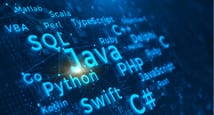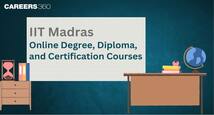- Introduction to ANSA
- ANSA GUI
- Geometric tools and topology cleanup
- Different tools used in the TOPO deck
Post Graduate Program in External Aerodynamic Simulations
Quick Facts
| particular | details | |||
|---|---|---|---|---|
|
Medium of instructions
English
|
Mode of learning
Self study
|
Mode of Delivery
Video and Text Based
|
Course and certificate fees
Fees information
₹ 275,000
The fees for the course Post Graduate Program in External Aerodynamic Simulations is -
| Head | Amount |
| Programme fees | Rs. 2,75,000 |
| EMI | Rs. 14,375/month |
certificate availability
Yes
certificate providing authority
Skill Lync
The syllabus
Course 1: Advanced CFD Meshing using ANSA
Week 01-Introduction to ANSA GUI and Tools
Week 02-2D (Surface) Meshing to Pressure valve
- PID creation and PID assignment
- Different selection techniques and visibility tools
- Basic Topology cleanup
- Basic tools used in surface meshing
Week 03-3D (Volume) Meshing to Turbocharger
- Geometry cleanup to define volumes
- Various geometry checks
- Surface meshing as per quality criteria
- Volumetric meshing as per requirements
Week04- CFD meshing to BMW M6 Model inside Wind tunnel
- Advanced topology cleanup to define volumes
- Variable surface meshing part by part
- Solving quality failed elements as per quality criteria
- Symmetry operation for surface and mesh elements
- Wind tunnel creation
- CFD meshing for wind tunnel
Week 05-Surface Wrap to an Automotive Assembly
- Geometry cleanups for the surface wrap.
- Merging of different models into one GUI.
- Surface wrapping for an assembly.
Course 2: Introduction to GUI based CFD using ANSYS Fluent
Week 01 - Introduction to CFD
- Governing Equations of Fluid Motion
- Numerical Discretization
- Fluid Solver
- Boundary Conditions
- Post-Processing
- Geometry Creation
- Meshing
- Boundary and Initial Condition Calculation
- Setting up solution algorithms
- Solving and post-processing
Week 03 - Performing Steady State Simulations
- Geometry created using SpaceClaim
- How to set up Steady-State Simulations?
- Checking for Convergence and understanding when the simulation converges for different boundary conditions
- How to create Runtime Animation of Engineering Parameters?
- Project 1: HVAC Simulation Inside a Mixing TEE
- Project 2: Performing Parametric Study on Flow Inside a Gate Valve
- Project 3: Performance Characterization of a Cyclone Separator
Week 04 - Exploring Meshing strategies
- Methods of providing local refinement like Sphere of Influence, Body Sizing, etc.
- Concept of Y plus and its importance
- Inflation Layers and Controls
- Mesh Dependence Test
Week 05 - External Aerodynamics
- Setting up Virtual Wind Tunnels using the Enclosure Utility
- Understand Vortices, calculating Downforce & the drag on a Vehicle
- Y+ Estimation & Grid Refinement
Week 06 - Conjugate Heat Transfer
- Extracting solid and fluid volumes
- Creating Shared Topologies for Creating Conformal Meshes
- Setting up Volumetric Heat Sources
- Visualizing Heat Transfer Coefficient Distribution
Week 07 - Discrete Phase Modelling
- Different types of discrete phase boundary conditions and their effects
- Methods of tracking the Discrete Phase Particles
- Turbulence Intensity and Vortex Core Visualisation
Week 08 - Introduction to User Defined Functions
- You will learn how to write a customized program,
- Create different monitor points, and
- Extract the relevant information you need to form a simulation.
Week 09 - Basic Reacting Flows
- In this module, you will learn how to simulate reacting flows using ANSYS Fluent.
- This includes combustion applications.
Course 3: MATLAB for Mechanical Engineers
Week 1 - Introduction to MATLAB
- MATLAB syntax and commands
- Methods and ways to use commands in different scenarios
- Manipulation of calculations and comparisons
- Use of arrays.
- Functions (plotting, creating animations, creating figures, and more)
Week 2 - Forward Kinematics Simulator
- Manipulator motion using ImageMagick
- Simulation of a 2R robotic arm manipulator
- Creating a movie clip with the spatial motions of a robotic arm
- ‘For’ loop in programming
- Working of the “hold on” command
- Arrays and linspace commands
Week 3 - Air Standard Cycle Simulator
- Solving piston kinematics equation to calculate volume trace
- PV diagrams for different operating conditions.
- Thermodynamic relationships
- Pressure-volume variations
- Order of the program
- Plots & legends used in the graphs
- Piston kinematics
Week 4 - Vibrations and Dynamics
- Backward difference formula (BDF) and forward difference formula (FDF) methods to solve ODEs
- Real use of differential equations
- How differential equations relate to real-world applications
- Solving differential equations
- ODE solvers, syntax of ODEs, and various supplementary commands
Week 5 - Curve Fitting and Regression
- Polynomials and their best fits
- PolyFit and PolyVal commands
- Calculating errors
- Sum of squares regression (SSR)
- Sum of squares error (SSE)
- Sum of squares total (SST)
Week 6 - Genetic Algorithm
- Optimization techniques
- Working of the genetic algorithm
- Genetic algorithm syntax and finding the global maxima
- Stalagmite functions and how it works
- Population size, number of generations, fitness value, and termination of further generations
Course 4: Introduction to CFD using MATLAB and OpenFOAM
Week 01-What is Computational Fluid Dynamics?
- CFD - An Introduction, Necessity, Advantages, and CFD Modeling Process
- Deriving and understanding the Navier Stokes equations
- Substantial Derivative
- Continuity Equation
- Momentum Equation
- Energy Equation
- Significance of the Reynolds number in the NS equations
Week 02-Mathemathics and Fluid Dynamics Essentials
- Basic Vector Calculus - Divergence, Gradient, and Curl
- Taylor’s Series
- Initial and Boundary Conditions
- Classification of PDEs and their characteristics
- Learning essential fluid dynamics quantities and their dimensional analysis
Week 03-Introduction to MATLAB and Basic CFD Concepts
- Getting acclimated to the MATLAB interface
- Numerical discretization and its types
- FDM - Understanding different schemes with worked examples in MATLAB
- Deriving own FD schemes using Taylor’s table
- Solving ODEs in MATLAB using the ‘ode45’ solver
Week 04-Exploring CFD by Solving Standard CFD Problems using FDM
- Solving coupled linear systems using iterative solvers
- Jacobi
- Gauss-Seidel
- SOR
Week 05-Introduction to FVM and OpenFOAM
- Finite Volume Method and Gauss Divergence Theorem
- Understanding the Linux environment
- OpenFOAM code organisation and case setup
- Detailed blockMeshDict tutorial
Week 06-Solving Standard CFD Problems in OpenFOAM
- In this module, you will be using OpenFOAM for exploring and simulating a wide variety of problems.
- You will also create a platform that will enable you to start any simulation from scratch and establish confidence in your result.
Course 5: Introduction to Aero-Thermal simulation using ANSYS Fluent
Week 01 - Introduction to FLUID FLows
- Types of fluid properties
- Newtonian and Non Newtonian fluids
- Description of fluid flows
- Overview of CFD methods
Week 02 - Introduction to Aerodynamics
- Role of aerodynamics in design
- Parameters of focus
- Instruments used in aircraft
- Similarity parameters
- Aerodynamic forces and moments
Week 03 - International Standard Atmosphere
- What exactly ISA is
- How to calculate the properties according to height
Week 04 - Tetra/Prism generation in ICEM CFD
- Be introduced to ICEM CFD
- Understand the steps to setup your domain in ICEM CFD
- Generate a mesh for your geometry
- Assess the quality of the mesh
Week 05 - Introduction to flow over airfoil
- Be introduced to what an airfoil is
- Understand the forces acting on an airfoil
- Use ICEM CFD to generate the domain required to analyse the flow over an airfoil
- Generate the mesh for two cases
- Incompressible flow over airfoil
- Compressible flow over airfoil
- Assess the quality of the mesh
Week 06 - Introduction to Turbulence modelling
- Introduced to turbulence
- Learn why it is important
- Understand how to model turbulent flows
- Understand the turbulence models available in commercial CFD packages
Week 07 - Simulate the flow over a NACA0012 Airfoil
- Learn how to setup your simulation for analysing aerodynamic forces on an airfoil
- Analyse the results for various angles of attack
Week 08 - Introduction to moving zones
- Learn about moving zones
- Approaches to model moving zones
- Moving reference frame
- Moving mesh
Week 09 - Comparison of Moving Reference and Moving mesh approach
- Use a turbomachinery component to compare MRF and MM approach
- Setup the simulation with appropriate parameters
- Analyse the results
Week 10 - Transient flow over air compressor
- Work on a sector a large air compressor
- Setup periodic zones in FLUENT console
- Setup the simulation to analyse the turbomachinery component
- Analyse the results
Week 11 - Introduction to Computational Aeroacoustics
- Learn about acoustics
- Learn about acoustic analogy methods
- CAA methodologies
Week 12 - Broadband Noise modelling
- Use ANSYS Mesher to generate the mesh for your domain
- Setup a symmetric model in FLUENT
- Run the acoustic solver to analyse noise sources
Course 6: Advanced Aerodynamic Simulations using CONVERGE
Week 01-Preparing the Surface for Flow Simulation
- To import your CAD designs into CONVERGE Studio for performing flow analyses.
- The CAD geometry contains information on what the model is supposed to look like.
- Work on fixing any errors, if present, and then split the geometry into boundaries so as to set up the simulation.
- This involves, but is not limited to:
- CAD import and cleanup
- Splitting the model into boundaries and flagging these boundaries
Week 02-Setting up the Simulation
- Creating virtual wind tunnel
- Setting the boundary conditions effectively
- How to choose the right turbulence model?
- K-Epsilon Vs. K-Omega SST
- Understanding Y+ and choosing suitable grid sizes for our simulation.
Week 03-Physics Modelling
- Turbulence Modelling
- Conjugate Heat Transfer
- Shock Capturing
Week 04-Extracting Aerodynamic Quantities
- Understanding the wake and the effect this will have on the aerodynamic parameters.
- Extracting information such as drag and lift force from Converge CFD.
Articles
Popular Articles
prev
next
Latest Articles
prev
next


 Brochure
Brochure Enquire
Enquire










